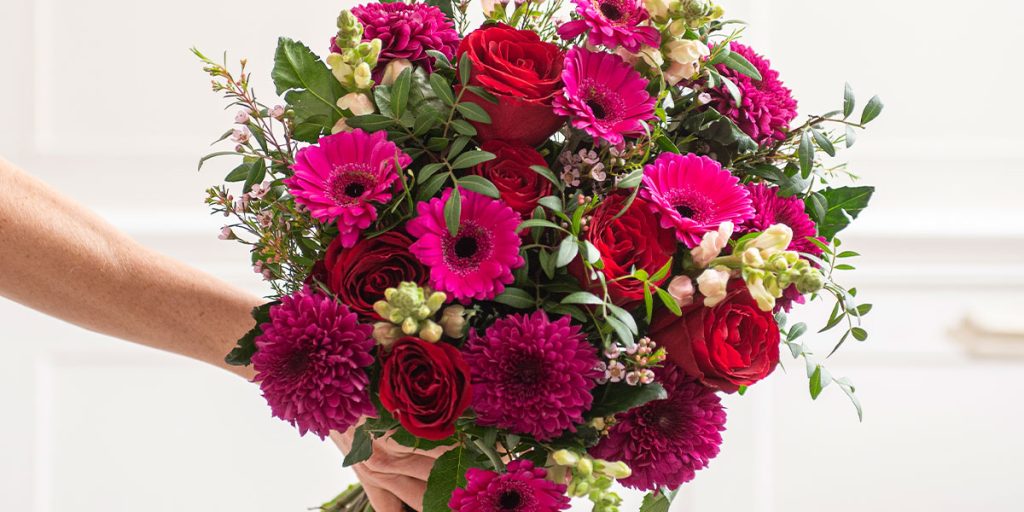Are you ready to tie the knot and wondering how much it will cost to make your own wedding bouquet? Look no further! We’ve got all the information you need to create a stunning bouquet on a budget. From the average cost of wedding flowers to tips and considerations for DIY bouquets, we’ve got you covered. So, grab your floral tape and ribbon, and let’s dive into the world of cost-effective floral arrangements for your special day.
Average Cost of Wedding Flowers
The average cost of wedding flowers can vary depending on your location and preferences. Factors affecting pricing include labor, delivery, and external factors like weather. Popular flower choices can also impact the cost, as certain blooms may be more expensive or harder to source. When it comes to floral design styles, there are various trends to consider, such as DIY bouquets. DIY bouquets have become increasingly popular as they can be significantly cheaper than purchasing from a florist. However, it’s important to consider the logistics and challenges of DIY bouquets, such as assembling the flowers close to the wedding date for freshness and the lack of experience in bouquet assembly. When budgeting for wedding flowers, it’s essential to create an overall wedding budget and allocate a percentage specifically for flowers. By discussing your budget and preferences with your florist, you can work together to achieve the best value and stay within your desired range.
Tips for Saving Money on Wedding Flowers
To save money on wedding flowers, consider these helpful tips:
When it comes to wedding flowers, there are several ways to keep costs down without sacrificing style and elegance. Consider using inexpensive flower alternatives such as greenery and filler flowers instead of expensive blooms. These options can still create a beautiful and lush look while being budget-friendly.
Another cost-saving tip is to repurpose ceremony flowers for the reception. After the ceremony, move the arrangements to the reception area to maximize their use and save on additional floral arrangements.
For centerpieces, think outside the box and opt for DIY ideas. Consider using unique vessels such as mason jars, vintage bottles, or even repurposed items like wine bottles or teacups. These budget-friendly floral vessels can add a charming and personalized touch to your tables.
Lastly, be mindful of your floral arrangements and consider cost-saving techniques. Mixing expensive flowers with inexpensive ones can create a high-low effect, and using lighting and other decor items alongside floral arrangements can reduce costs. Additionally, communicating your budget and preferences to your florist can help ensure that you get the best value for your money.
Factors Affecting the Cost of Wedding Flowers
Factors that can affect the cost of your wedding flowers include labor, delivery, and external factors such as weather, which will impact the price you pay for your floral arrangements. Here are some key considerations:
- Fresh vs. silk flowers: The choice between fresh and silk flowers can significantly impact the cost. Fresh flowers tend to be more expensive due to their perishable nature, while silk flowers are a more affordable alternative that can still create a beautiful look.
- Impact of floral shortages: Floral shortages and supply chain issues can affect the availability and price of certain blooms. If a particular flower is in high demand or experiencing a shortage, it may drive up the cost.
- Wedding date and floral holidays: The timing of your wedding in relation to floral holidays, such as Valentine’s Day or Mother’s Day, can also impact the cost. These holidays tend to drive up the prices of flowers, so consider scheduling your wedding during a less popular time to save money.
- Installation of flowers: The cost of installation, whether it’s done on the day of the wedding or beforehand, can also affect the overall price. If you choose to have elaborate floral installations, such as arches or hanging arrangements, it may require additional labor and increase the cost.
- Cost of reception flowers: Reception flowers, especially elaborate centerpieces or installations, can be costly. Consider alternatives such as using silk florals for the reception to save money while still achieving a stunning look.
Sample Budgets for Wedding Flowers
When planning your wedding, it’s important to allocate a portion of your overall budget for wedding flowers. Flower budget allocation can vary depending on your preferences and location. Affordable floral options are available to help you stay within your desired range. If you’re looking to save money, consider creating your own bouquet with a DIY bouquet cost breakdown. This can be significantly cheaper than purchasing from a florist. You can purchase bulk flower orders from stores like Sam’s Club or Costco to save money. Choosing seasonal blooms is another cost-saving option as they tend to be more affordable. Additionally, some florists offer wedding flower package deals that can help you save money on various floral arrangements for your ceremony and reception. Discuss your budget with your florist and ask for their suggestions to ensure you stay within your desired range. By being strategic and choosing affordable options, you can create beautiful wedding floral arrangements without breaking the bank.
Additional Floral Expenses
You can expect additional expenses when it comes to wedding flowers, such as reception centerpieces, ceremony structures, and other arrangements. Here are some details about these additional floral expenses:
- Reception centerpieces: The cost of reception centerpieces can range from $120 to $600. These floral arrangements add beauty and elegance to each table, enhancing the overall ambiance of the reception venue.
- Ceremony structures: If you’re planning to have a ceremony structure, such as an arch or a gazebo adorned with flowers, you can expect to spend between $1,500 and $4,000. Ceremony structures serve as a focal point during the wedding ceremony and provide a picturesque backdrop for exchanging vows.
- Additional arrangements: Apart from the bouquet and boutonnieres, there may be additional arrangements needed next to place cards and guest books, which may cost around $200. These small floral accents add a touch of beauty and cohesion to various areas of the wedding venue.
Other floral expenses to consider include head table florals, which can amount to $1,500, while sweetheart table decor may cost $500. Additionally, cake flowers can be added to decorate the wedding cake, with an average cost of $150. Flower crowns, if desired, can be an additional expense of around $100. These additional floral expenses contribute to the overall aesthetic and ambiance of your wedding day.
Cost Considerations for DIY Bouquets
To make a DIY bouquet for your wedding, it’s important to consider the cost implications and factors that can affect your budget. DIY bouquets can be a cost-effective alternative to purchasing from a florist. One way to save money is by ordering bulk flower supplies from stores like Sam’s Club or Costco. Prices for DIY bouquets can vary depending on the types of flowers and greenery chosen, with in-season options tending to be more affordable. Another option is to explore grocery store florists or local floral wholesale districts, as they often offer inexpensive alternatives. When it comes to the logistics of DIY bouquets, it’s crucial to assemble the flowers close to the wedding date for freshness. Fake florals are not recommended for DIY bouquets, but if you choose to use artificial flowers, you can make the bouquets ahead of time. Necessary supplies for DIY bouquets include flower tape and decorative ribbon. Additionally, if you find that DIY bouquets are not the right fit for you, there are alternatives available such as affordable bridal bouquets from websites like Bouqs.com or bridal bundles from Costco.com. You can also find DIY bouquet tutorials on websites like Fiftyflowers.com.
Logistics of DIY Bouquets
Assembling the flowers close to the wedding date is essential for ensuring the freshness of your DIY bouquet. Here are some important logistics to consider when creating your own wedding bouquet:
- DIY bouquet assembly: When assembling your bouquet, it’s important to have all your supplies ready, including flower tape and decorative ribbon. Take your time to carefully arrange the flowers, ensuring that they are securely fastened together. Consider practicing the bouquet-making technique beforehand to ensure a beautiful result.
- Fresh vs artificial flowers: While fresh flowers are the traditional choice for wedding bouquets, artificial flowers can also be used if you prefer a longer-lasting option. Keep in mind that artificial flowers may require assembly ahead of time, allowing you to have your bouquet ready before the wedding day.
- Bouquet preservation techniques: To preserve the freshness of your DIY bouquet, there are a few techniques you can use. Trim the stems of your flowers before arranging them and use floral preservatives in the water to extend their lifespan. Additionally, keep your bouquet in a cool area and mist it with water to keep it hydrated.
In addition to the bouquet, you may also consider DIY centerpiece ideas for your wedding reception. This can be an opportunity to get creative and save money by using alternative options like submerged flowers or unique vessels for smaller centerpieces.
Alternatives to DIY Bouquets
If you’re not interested in assembling your own bouquet, there are alternative options available for wedding flowers. One option is to consider silk flower alternatives. Silk flowers can provide a cost-effective and long-lasting alternative to fresh flowers. They come in a variety of colors and styles, allowing you to create a bouquet that matches your wedding theme perfectly. Another affordable bouquet option is to rent wedding flowers. There are companies that specialize in renting out high-quality floral arrangements for weddings. This can be a great option if you want beautiful flowers without the high price tag. Additionally, there are unique bouquet alternatives to consider. For example, you could opt for a non-traditional bouquet made of feathers, brooches, or even paper flowers. These alternatives can add a touch of uniqueness and personalization to your bouquet. Overall, if you’re not interested in DIY bouquets, there are plenty of other options to explore that can fit your budget and style.
Challenges and Considerations for DIY Bouquets
When making DIY bouquets, you’ll encounter various challenges and considerations that can impact the process and outcome. Here are some important factors to keep in mind:
- Time Management: Creating your own bouquets can be time-consuming, especially if you’re not experienced in floral arrangement. Allocate sufficient time to gather supplies, practice bouquet-making techniques, and assemble the flowers close to the wedding date for freshness.
- Flower Selection: Choosing the right flowers is crucial for DIY bouquets. Consider the seasonality of flowers to ensure affordability and availability. Research and gather inspiration to select the perfect blooms that match your vision and style.
- Budgeting Tips: DIY bouquets can be a cost-effective alternative, but it’s important to budget wisely. Buy flowers in bulk to save money, opt for alternative greenery or filler flowers to reduce costs, and consider smaller-sized bouquets. Look for discounted flowers at grocery store florists or local floral wholesale districts.
While DIY bouquets have their pros and cons, professional assistance can also be considered. If you’re unsure about your floral arrangement skills or have a large quantity of bouquets to make, hiring a professional florist may be the best option. They can provide guidance, expertise, and ensure that your bouquets turn out beautifully.
Tips and Considerations for DIY Bouquets
Considerations for DIY bouquets include flower selection, budgeting tips, and the option of seeking professional assistance. When it comes to DIY bouquet techniques, there are a few cost-saving strategies you can implement. One of the most effective ways to save money is by buying flowers in bulk from stores like Sam’s Club or Costco. This allows you to get a larger quantity of flowers at a lower cost. Additionally, choosing seasonal flowers can help reduce expenses since they tend to be more affordable.
To assemble your DIY bouquet, you’ll need a few necessary supplies. Flower tape is essential for securing the stems together, while decorative ribbon can add a finishing touch. When it comes to bouquet assembly tips, it’s important to assemble the flowers as close to the wedding date as possible to ensure freshness. Fake florals are not recommended for DIY bouquets, as they lack the natural beauty of fresh flowers.
If you’re not confident in your DIY skills, you can always consider seeking professional assistance for your bouquet. Local florists or floral wholesale districts often offer inexpensive options for bouquet assembly. Alternatively, websites like Bouqs.com and Costco.com provide affordable bridal bouquets that can be delivered directly to your door.
Factors Affecting the Cost of Wedding Flowers
Factors such as flower selection, wedding date, and the number of floral pieces needed can all impact the cost of wedding flowers. Here are some key factors to consider:
- Fresh vs. silk flowers: The choice between fresh and silk flowers can significantly affect the cost of wedding flowers. Fresh flowers are generally more expensive due to their natural beauty and fragrance, while silk flowers offer a more budget-friendly option without compromising on aesthetics.
- Wedding date and floral holidays: The timing of your wedding can impact the availability and cost of certain flowers. Floral holidays, such as Valentine’s Day and Mother’s Day, often drive up the prices of popular blooms. Choosing a wedding date that does not coincide with these holidays can help you save money on your floral arrangements.
- Installation of flowers: The cost of wedding flowers can also be influenced by the installation process. If you opt for elaborate floral installations, such as archway garlands or large-scale centerpieces, the cost may be higher due to the additional labor and materials required. Considering alternative options, such as using silk florals for the reception, can help you achieve a stunning look while reducing costs.
For couples looking for affordable ceremony and reception flowers, Something Borrowed Blooms offers a range of rental options. They provide custom garlands, coordinating centerpiece sizes, and easy setup using zip ties. Consulting with Something Borrowed Blooms can provide you with valuable assistance and inquiries about renting wedding flowers.
Mixing Fresh and Silk Flowers
To achieve a beautiful look while saving money, consider mixing fresh and silk flowers for your wedding bouquets and arrangements. Mixing fresh and silk flowers offers several benefits. Firstly, it provides cost-saving opportunities as silk flowers tend to be more affordable than fresh ones. You can use fresh flowers for the bridal bouquet, which is the focal point, and then opt for silk flowers for the bridesmaid bouquets. This compromise allows for significant savings while still incorporating fresh flowers into your wedding.
Another advantage of mixing fresh and silk flowers is the long-lasting options it provides. Silk flowers can be preserved as keepsakes long after the wedding day, while fresh flowers will eventually wilt and fade. By combining both types of flowers, you can enjoy the beauty of fresh blooms during the event and keep the silk flowers as a lasting memento.
If you’re concerned about the cost of reception flowers, switching to silk florals can result in significant savings. For example, you can compare the cost of an archway garland made with fresh flowers versus one made with silk flowers or greenery. Something Borrowed Blooms is a great resource for affordable ceremony and reception flowers. They offer a variety of centerpiece options and custom garlands that coordinate with their floral collections. With their easy setup using zip ties, you can achieve larger-than-life floral installations for less.
Consider mixing fresh and silk flowers to create stunning wedding bouquets and arrangements while staying within your budget. It’s a cost-effective choice that provides long-lasting options and allows you to achieve your desired look without breaking the bank.



